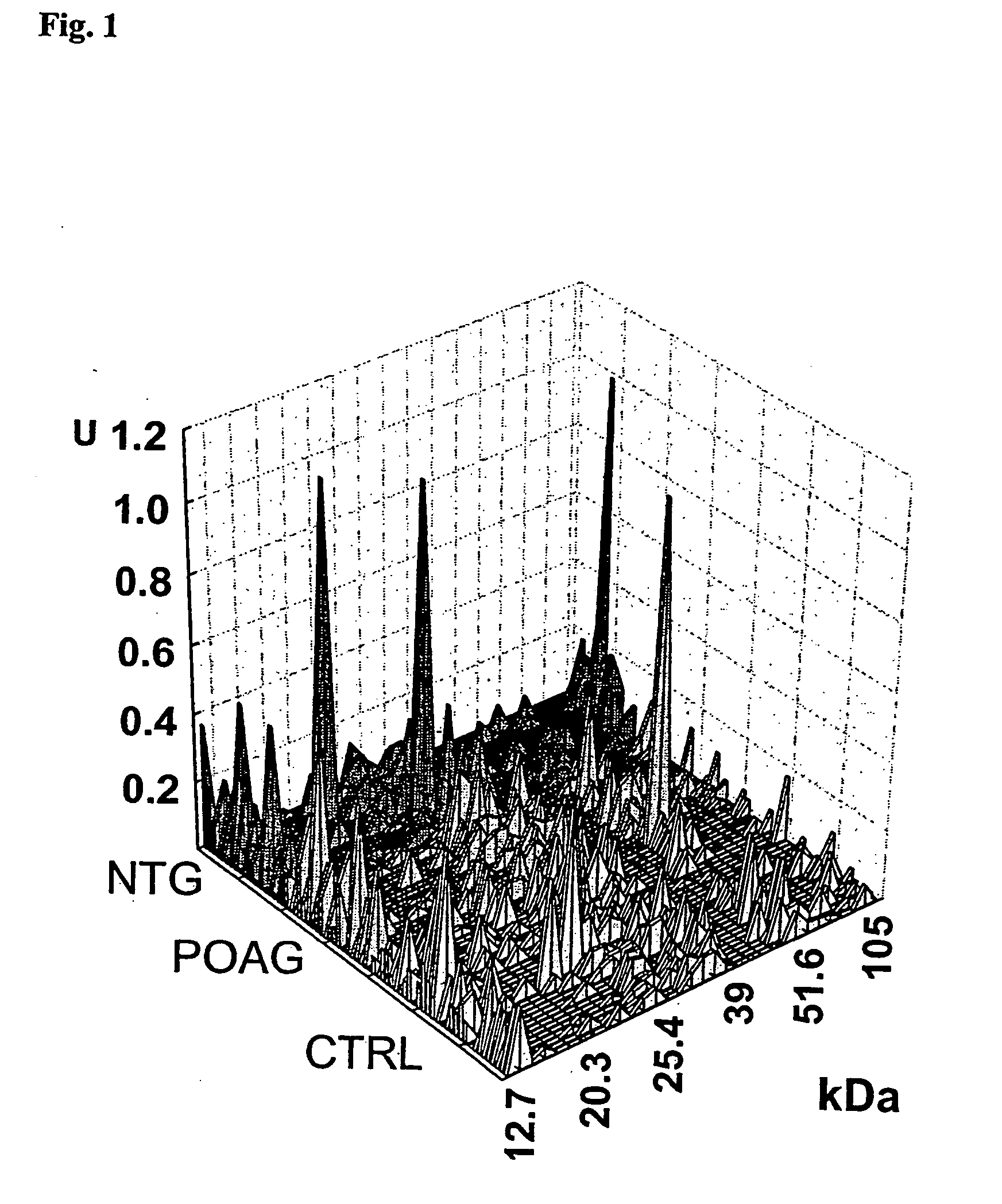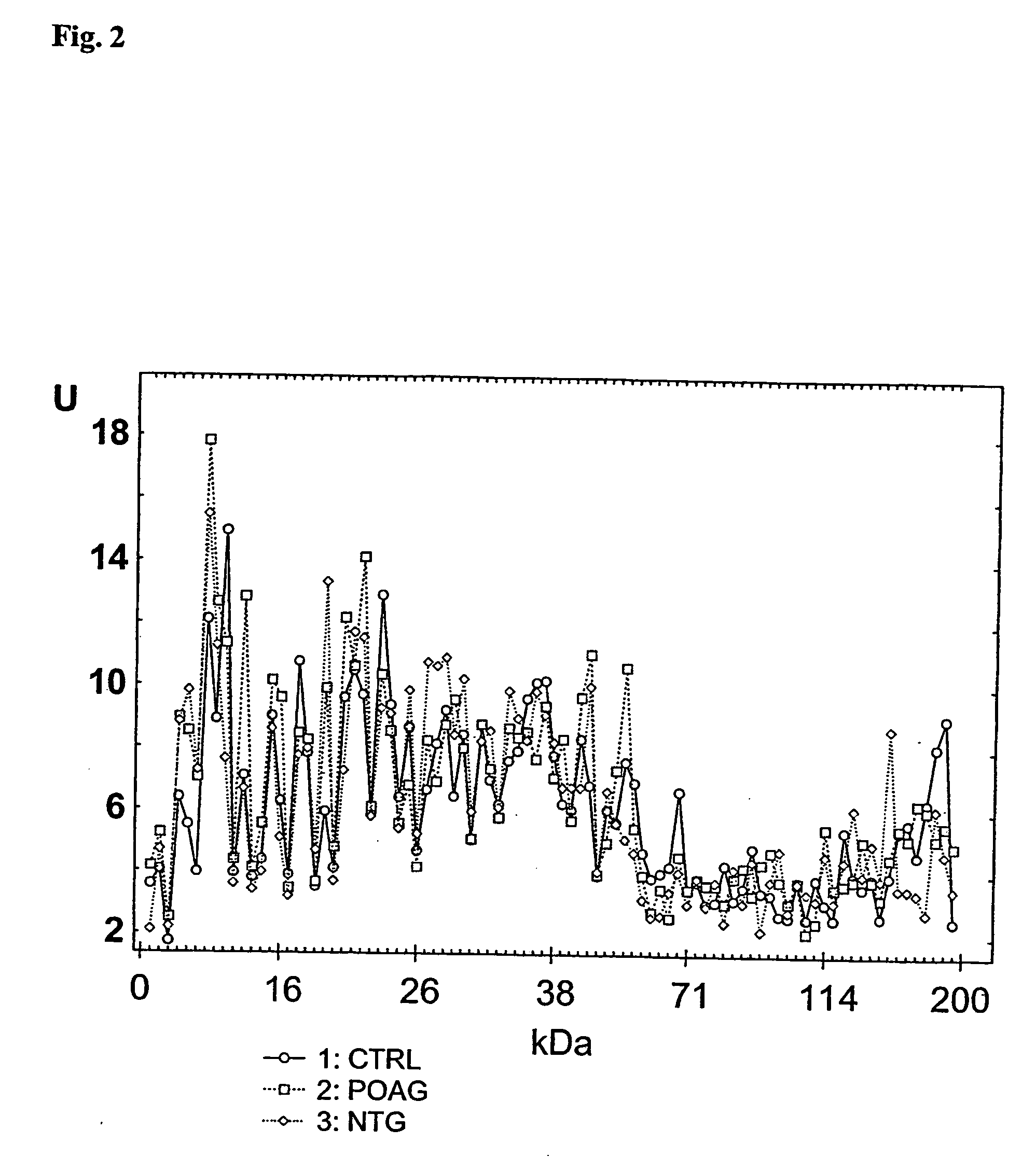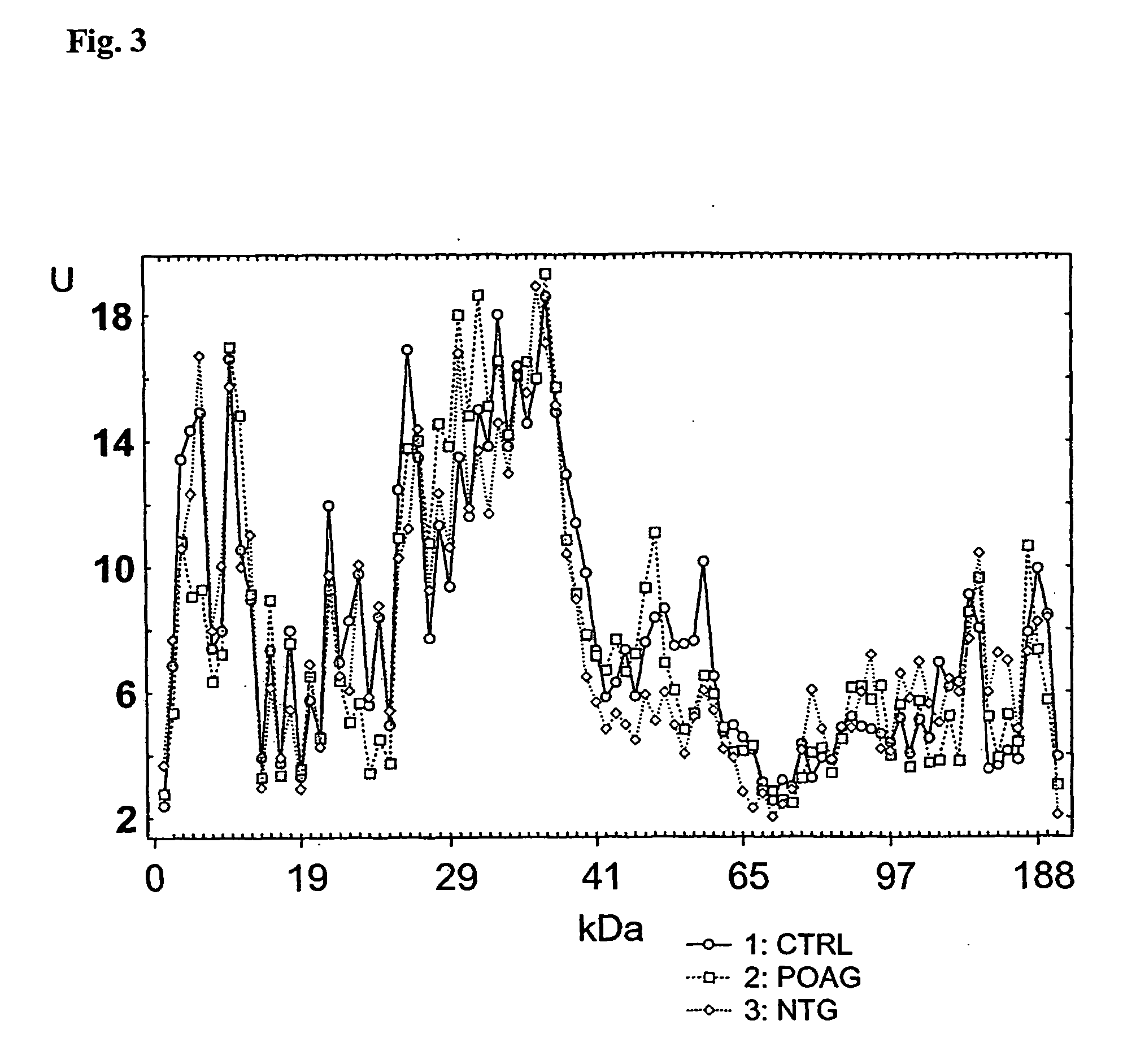Diagnosis of glaucoma by complex autoantibody repertoires in body fluids
a technology of autoantibody repertoire and glaucoma, which is applied in the direction of material testing goods, measurement devices, instruments, etc., can solve the problems of glaucoma and the best way to treat it still not completely investigated, retinal ganglion cell death through retrograde degeneration, total and irreversible blindness,
- Summary
- Abstract
- Description
- Claims
- Application Information
AI Technical Summary
Benefits of technology
Problems solved by technology
Method used
Image
Examples
examples
[0052] A total of 524 patients are divided into analysis groups: healthy volunteers without any ocular disorders (CTRL, n=189), patients with primary open angle glaucoma (POAG, n=96), and normal tension glaucoma (NTG, n=74). According to the classification guidelines of the European Glaucoma Society, patients suffering from ocular hypertension (OHT, n=87) without any glaucoma damage are classified as healthy controls and are included in the CTRL group in this study. To test the robustness of the glaucoma detection, in an additional procedure 165 patients with other ocular disorders (e.g. retinal diseases) are included in the non-glaucoma group (CTRL2).
[0053] The inclusion criteria for POAG are: intraocular pressure (IOP) more than 21 mm Hg, untreated, on at least one occasion. No known alternative reason for elevated IOP like alternative causes of optic neuropathy (e.g. infection, inflammation, ischemic disease, and compressive lesions). Intraocular pressure is determined by Goldma...
PUM
| Property | Measurement | Unit |
|---|---|---|
| intraocular pressure | aaaaa | aaaaa |
| molecular weight | aaaaa | aaaaa |
| molecular weights | aaaaa | aaaaa |
Abstract
Description
Claims
Application Information
 Login to View More
Login to View More - R&D
- Intellectual Property
- Life Sciences
- Materials
- Tech Scout
- Unparalleled Data Quality
- Higher Quality Content
- 60% Fewer Hallucinations
Browse by: Latest US Patents, China's latest patents, Technical Efficacy Thesaurus, Application Domain, Technology Topic, Popular Technical Reports.
© 2025 PatSnap. All rights reserved.Legal|Privacy policy|Modern Slavery Act Transparency Statement|Sitemap|About US| Contact US: help@patsnap.com



